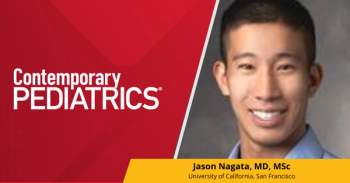
What pediatricians should know about diagnosing autism
The pediatric medical home is the perfect place for early diagnosis of children who may have autism spectrum disorder.
With autism spectrum disorder (ASD) affecting 1.7% of 8-year-old children, all pediatricians are likely to have many children with ASD under their care.
Pediatricians play an important role in optimizing outcomes for children with ASD, from facilitating early diagnosis, helping families access evidence-based treatments, identifying and treating comorbid medical and behavioral conditions, and serving as a resource to families about the safety and evidence relating to complementary and alternative medical treatments, said Lisa H. Shulman, MD, at the American Academy of Pediatrics (AAP) 2019 National Conference and Exhibition in New Orleans, Louisiana, in October.
In seminar sessions held on Monday, October 28, and Tuesday October 29, Shulman provided an overview of “Autism spectrum disorder: What every pediatrician should know” in 2019.
“Signs of ASD are often apparent by age 18 months or even younger, and yet it remains the case today that the diagnosis is typically not made until after age 4 years. Because of the frequency with which children are seen by their pediatricians when they are very young, the medical home is the perfect place for identifying children who may have ASD,” said Shulman, professor of Pediatrics, Albert Einstein College of Medicine, and interim director of the Rose F. Kennedy Children’s Evaluation and Rehabilitation Center at Montefiore Medical Center, Bronx, New York. “Each encounter over time is an opportunity to not only evaluate developmental milestones but also social functioning,”
Shulman noted the need for following the AAP guidelines on screening for ASD at 18 and 24 months to help improve early identification, and also for pediatricians to not rely solely on completed checklists but to “look with their own eyes” for early signs that are predictive of autism when present at 12 months. These signs include reduced eye contact, failure to respond to name, not pointing to request, and not pointing to show. How easy is it to obtain the child’s attention? To achieve a shared smile in response to a song? How does the child let you know that he/she wants a colorful object out of reach?
A hearing test is essential in the medical workup for a child when ASD is suspected. After hearing is cleared and there is concern about ASD, simultaneous referrals should be made for a diagnostic evaluation and for early intervention to the school district. “The diagnostic evaluation for ASD can take some time. So, do not wait for it to be completed before making the referral to early intervention or the school district,” Shulman said.
She encouraged pediatricians who do not work in a setting with access to an existing ASD diagnostic center to “make a team” of professionals who have an interest and expertise in early ASD diagnosis. The team can be informal and might include a developmental pediatrician, neurologist, or psychiatrist and a psychologist, and/or speech and language pathologist.
Shulman reviewed the Diagnostic and Statistical Manual of Mental Disorders (DSM-5) diagnostic criteria and discussed the importance of genetic testing, which over time has led to an increasing number of findings relating to the multiple etiologies of ASD. “There are likely epigenetic or environmental second hits that contribute to the development of ASD in children at biologic risk, and we cannot rule out the possibility that there are unknown risk factors leading to an increase in the incidence of ASD,” she said.
Shulman also covered the evaluation and management of medical and emotional/behavioral issues that are common in children with ASD. “As the primary care provider, pediatricians are ideally positioned to monitor for the various conditions that are often comorbid with ASD, including attention-deficit/hyperactivity disorder, anxiety, restrictive eating habits, and constipation, as well as to give anticipatory guidance regarding relevant safety issues such as elopement,” she said.
With an ever-widening set of complementary and alternative medicine (CAM) interventions being promoted for ASD, and confusion over what is experimental and what is evidence based, Shulman reminded pediatricians to ask families about all the treatments they are accessing for their children.
“If you don’t ask, you may not hear about the various treatments families are utilizing,” she said. “Whereas some CAM treatments are quite safe, others may pose risk such as hyperbaric oxygen, chelation, immunoglobulins, stem cell therapies, bleach therapy, and so on. Building on a trusted relationship, pediatricians can be a resource to families to help them sort out safe and effective choices.”
Noting ongoing public concern about vaccination and ASD, Shulman also reviewed the literature on this topic, including the most recent nationwide cohort study that included more than 657,000 children born in Denmark.
“Consistent with previous research, the authors of the Danish study determined that their findings support the conclusion that the measles/mumps/rubella vaccine does not increase the risk for autism or trigger it in susceptible children,” she said.
COMMENTARY
Autism spectrum disorder (ASD) is relevant to every pediatrician given that it affects roughly 2% of children in the United States and has a significant impact on the lives of children and families. Most children are diagnosed after the age of 4, years after evidence-based ASD-specific therapy could have begun.
Pediatricians play a vital role in early identification of children with ASD and with ongoing care throughout childhood and adolescence. It is therefore important that every pediatrician have a sound working knowledge of this condition in order to facilitate early identification, maximize functional outcomes, and support children with ASD and their families.
In a session at the AAP 2019 National Conference and Exhibition, Dr. Lisa Shulman, a developmental pediatrician at Albert Einstein College of Medicine and current member of the AAP Autism Subcommittee, reviewed “What every pediatrician should know” about ASD. She emphasized developmental surveillance, a process in which pediatricians look for early signs of ASD during health supervision visits. Orienting to name and joint attention were identified as social skill milestones that are critical in identifying toddlers at risk for ASD. Screening all children for ASD at the 18- and 24-month visits, as recommended by the AAP, was also reviewed as a way to augment developmental surveillance in order to facilitate early identification.
Once a child is identified as at risk, Shulman provided important recommendations for the pediatrician regarding referrals for a comprehensive “team-based” ASD evaluation, along with simultaneous referrals to an early intervention program or to a special education program to get appropriate interventions started. She also reviewed aspects of the medical workup for children with ASD, including genetic testing.
Once the diagnosis is made, Shulman provided important information about identification and management of common co-occurring conditions, addressing questions about integrative, complementary, and alternative medications, and ways to inform parents about the lack of association between vaccines and ASD.
Paul S. Carbone, MD, is professor of Pediatrics, University of Utah, Salt Lake City, Utah, and chairperson of the AAP Council on Children with Disabilities Autism Subcommittee.
Newsletter
Access practical, evidence-based guidance to support better care for our youngest patients. Join our email list for the latest clinical updates.

![Jodi Gilman, PhD, on cumulative prenatal adversity linked to adolescent mental health risk Document Jodi Gilman, PhD, on cumulative prenatal adversity linked to adolescent mental health risk Live? Do you want this document to be visible online? Scheduled Publishing Exclude From Home Page Do you want this document to be excluded from home page? Exclude From Infinite Scroll Do you want this document to be excluded from infinite scroll? Disable Related Content Remove related content from bottom of article. Password Protection? Do you want this gate this document? (If so, switch this on, set 'Live?' status on and specify password below.) Hide Comments [Experiment] Comments are visible by default. To hide them for this article toggle this switch to the on position. Show Social Share Buttons? Do you want this document to have the social share icons? Healthcare Professional Check Is Gated [DEV Only]Do you want to require login to view this? Password Password required to pass the gating above. Title Jodi Gilman, PhD, on cumulative prenatal adversity linked to adolescent mental health risk URL Unique identifier for this document. (Do not change after publishing) jodi-gilman-phd-on-cumulative-prenatal-adversity-linked-to-adolescent-mental-health-risk Canonical URL Canonical URL for this document. Publish Date Documents are usually sorted DESC using this field. NOTE: latency may cause article to publish a few minutes ahead of prepared time 2026-01-19 11:52 Updated On Add an updated date if the article has been updated after the initial publish date. e.g. 2026-01-19 11:50 Article Type News Display Label Author Jodi Gilman, Phd > Gilman, Jodi Author Fact Check Assign authors who fact checked the article. Morgan Ebert, Managing Editor > Ebert, Morgan Content Category Articles Content Placement News > Mental, Behavioral and Development Health > Clinical AD Targeting Group Put the value only when the document group is sold and require targeting enforcement. Type to search Document Group Mapping Now you can assign multiple document group to an article. No items Content Group Assign a content group to this document for ad targeting. Type to search Issue Association Please choose an issue to associate this document Type to search Issue Section Please choose a section/department head if it exists Type to search Filter Please choose a filter if required Type to search Page Number Keywords (SEO) Enter tag and press ENTER… Display summary on top of article? Do you want display summary on top of article? Summary Description for Google and other search engines; AI generated summary currently not supporting videos. Cumulative prenatal adversities were linked to higher adolescent mental health risk, highlighting the importance of prenatal history and early clinical monitoring. Abstract Body *********************************************************************************************************** Please include at least one image/figure in the article body for SEO and compliance purposes ***********************************************************************************************************](https://cdn.sanity.io/images/0vv8moc6/contpeds/e6097cb5e6d6c028c0d4e9efd069e69fdab6d00b-1200x628.png?w=350&fit=crop&auto=format)






